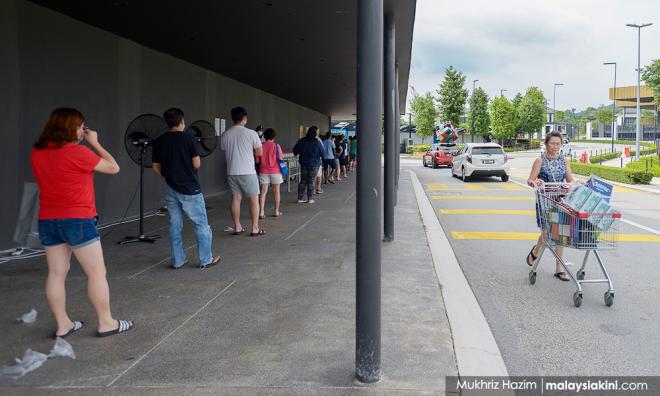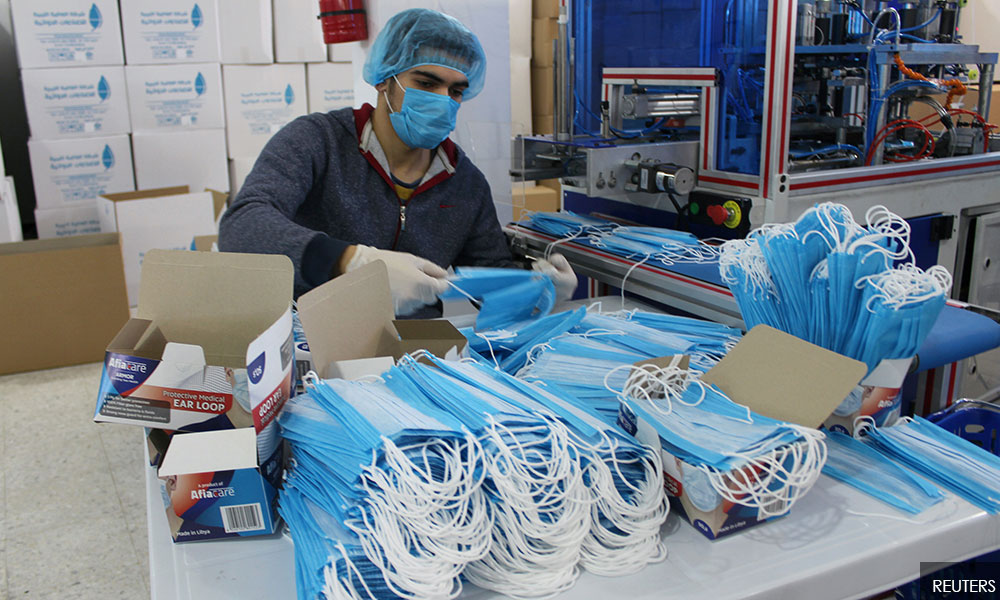
The coronavirus has spread so fast it has brought the medical facilities in developed countries like the United States, Italy, Spain and the United Kingdom to their knees. It has pushed stable places like Australia and Switzerland into the state of emergencies. It has fundamentally changed the order of the world.
An expert predicted that this virus could affect 20 to 60 percent of the world’s population in the end.
To know how contagious coronavirus is, we need to look at its R0 number. This is called the “basic reproduction number”.
A fast virus
The current R0 of coronavirus is 2 to 2.5. This means that if one infected person spreads the virus to one or two other persons, after 10 rounds, we would have around 2,047 people infected. Coupled by the lack of vaccine and the lack of obvious symptoms, coronavirus spreads faster than we can contain.
We used to think that you need to twin symptoms of high fever and cough to have the virus, then it became enough just to have flu-like symptoms. Later we learned that any loss of sense of smell or taste is sufficient. Now, we learn that it may be possible for the virus to travel through vapour in our breaths.
Coronavirus could also be without any symptoms. Any precaution taken yesterday is already unusable today.
With the rising death tolls and growing red zones, we know that lifting the lockdown after April 14 is unrealistic. Even if it was lifted, it will not – and should not – be a total lift. Even if it were a complete lift, many of us would not resume normalcy because nothing is safer than before.
The only gamechanger is a vaccine. But a vaccine will take years to reach our hands. The process of research, testing, developing, manufacturing, and distributing takes at least 12 to 18 months to complete.
But surely we cannot stay in lockdown for a year, or even another month.
If we don’t want to wait that long, we could try some untested medicines advertised on our WhatsApp groups, or we could try trapping the coronavirus jinn into a jar – but I am sceptical of its success.

The rest of us would just have to wait. We are frustrated, restless, and anxious being quarantined at home. Our economy cannot sustain on a standstill; our minds could not stay idle; our bodies could not remain trapped.
We need a short- to a medium-term solution that could minimise the spread – with assurance and effectiveness – so that we can carry on with our lives with some semblance of normalcy. Our best bet could, therefore, be in “tracing”.
Tracing could be the answer
If we could find a way to know – instantly and accurately – who around us has coronavirus and who has been in close contact with someone infected, then we will be able to live normally again.
We currently only do manual tracing.
Medical authorities will ask infected patients about their recent close contacts. The patients would have to recall with their imperfect memory and list down the names, and the authorities will then proceed to either isolate, quarantine or test these contacts.
We have it worse. When we are forced to go out for grocery shopping or essential services, we do not know who has coronavirus symptoms and who has been in contact with someone who has it. We could only rely on either extreme caution – wearing N95 masks, gloves, sanitiser, and not touching anyone at all – or pure luck.
Lack of knowledge makes us suspicious of everyone. We wouldn’t touch what others have touched before it is sanitised. No more hugs, handshakes, or high-fives. Only extreme caution.

But all is not lost. Many of us may have missed an important article called “Quantifying SARS-CoV-2 transmission suggests epidemic control with digital contact tracing” in the Science Magazine. What the article suggested is that we could have an App that could alert us on whether we are proximate to someone who may have coronavirus.
Technology could save us
When a person is tested positive for coronavirus, the App will pick up all the close contacts of the patient. And if anyone comes close to the patient’s close contacts, they will be alerted through the phone. This is done through Bluetooth and location data. The categorisation of risk could be green, amber or red.
The use of this App in China, South Korea, and Singapore has shown a correlation in decreasing the daily infection numbers.
The good thing is that digital tracing could help achieve “sustained epidemic suppression”, which helps reduce the R0 to below 1. It could also mean that we could be released from the lockdown earlier so that we could resume our lives with more normalcy and control again.
I know there is an ongoing effort to introduce digital tracing in Malaysia. But this must be done almost immediately – with a turnaround time of two to four weeks at most – as we would need time for nationwide adoption and education before we could fully enjoy the benefits of the App. And the sooner we get this done, the sooner we could resume a semblance of a normal life.
Manual tracing is simply too slow and unscalable, and it is also “highly unlikely” to contain the virus due to its rapid spread.
History is changing and we are in the middle of it.
But it doesn’t feel like it if we are simply asked to stay at home. If we are asked to design a new way of living, one that uses artificial intelligence, with agile infection confirmations and accurate predictions to tell us what to do to stay safe, healthy and happy – an App that has our individual and community interest at heart – then that is a new world I am sure we could all embrace.
JAMES CHAI is a legal consultant and researcher working for Invoke, among others. You may reach him at jameschai.mpuk@gmail.com. - Mkini


No comments:
Post a Comment
Note: Only a member of this blog may post a comment.